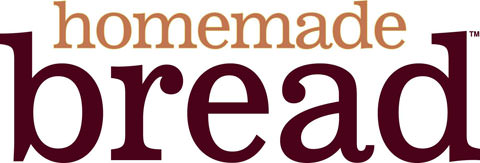

 Courtesy Comstock Images/Comstock/ Thinkstock A secret to making good bread is trusting your instincts during the baking process |
Successfully baking bread takes practice, but it is very doable. Some of the most common problems faced by new and not-so-new bakers have avoidable causes and easy solutions.
Don’t let the constant fear of bread-baking mishaps keep you out of the kitchen. Dust off the bread pans, pull out the big bag of flour, and get ready to knead some dough worry-free.
Follow Your Instinct
How many times have you moaned, “But I followed the recipe perfectly!” while looking at an inedible mess covering your kitchen counter? What went wrong? How could it have gotten so messed up when you meticulously followed the bread recipe, step by step?
That’s what went wrong. You followed the directions, not your hands or eyes.
In generations past, baking was an enjoyable activity that rarely required a cookbook. Remember how Grandma would just toss handfuls of flour and a glass of water in the bowl, mixing it until it looked “right?” It turned out just fine! Today’s bakers need to adopt that sort of trust in their culinary instincts.
This is not to say that people should toss cookbooks out the window and just grab a bit of this and a lot of that, expecting perfectly formed loaves of bread as the final results. Not at all. Instead, experts encourage bakers to learn what dough should look and feel like, and not be afraid to “tweak” the recipe here and there to get the desired result.
Bread varies depending upon the environment. A wet and rainy day can result in a different dough than a loaf baked on a dry and hot summer afternoon. The dough might need less liquid on that wet day. Novice bakers often don’t know this, and they instead add the ingredients as listed in the recipe without paying attention to the dough in front of them.
Top Bread-baking Troubles
Aside from practicing the art of baking and learning to trust what you see and feel, there are other things you can do to avoid and fix common bread-baking problems.
Gummy bread
Gummy bread can result from slicing into the bread loaf before it’s completely cooled. It might feel nearly impossible to resist taking just a nibble, but launching into fresh-from-the-oven bread can ruin the whole loaf.
Before cutting or storing bread, let it cool completely on the kitchen counter, not in the bread pan. Slide the loaf out of the pan, and rest it on its side on a wire cake rack. When it is time to cut off a slice (or 10), always use a sharp serrated knife.
Flour dilemma
All flours are not created equal. A recipe that calls for unbleached all-purpose white flour can’t be interchanged equally in a recipe with whole-wheat flour or bread flour. Results will not be the same or even desirable, leading to a failed loaf or one with too tough a crust.
Even unbleached and bleached flours differ in protein content, which results in different outcomes. When a recipe does not specify which flour to use, default to the all-purpose unbleached variety.
Kneading time
Kneading improperly stands out as a top cause of bread-baking snafus. Sure, you can let a stand mixer do the job, but kneading by hand will produce the best results, if done properly.
Too thick of a crust or large holes in the bread can result from too much kneading, while a sour flavor, flat bread top, soggy loaf or one that sags in the middle can stem from too little kneading. Remain patient, work the dough, and know when the dough is done. It should be soft, smooth and springy but not very sticky.
Eight to 10 minutes of kneading with lightly floured hands on a lightly floured surface is a crucial bread-baking step. Kneading remains a skill best learned through practice, but once mastered, it can result in amazing loaves.
Too much flour
Adding too much flour to the dough as you start to knead is counterproductive. Experts recommend waiting a bit to see if the dough seemingly too wet to work with begins to form a more workable texture before you dump handfuls of flour on the work surface. When needed, use pinches of flour—not handfuls—as you knead.
Dough doesn’t rise
Using old yeast, even if it has not yet expired, usually causes bread failure. Proof the yeast first to make sure it’s good, and use lukewarm water—not hot or cold water—when adding it to the recipe. Yeast can even be stored in the freezer to help it last longer.
Loaves that don’t rise can also develop from old yeast, improper flour choice, wrong baking temperatures, the addition of salt to the yeast instead of the dry ingredients, improper measurement of ingredients and incorrect kneading techniques.
Collapsed loaf
Bread that collapses in the oven results from letting the loaf over-rise for too long of a time or in too hot of temperatures. This also can happen if the oven is not hot enough during baking. Use an oven thermometer to test that the temperature gauge and the internal temperature of the oven match.
Despite many potential trouble spots, remember that there are just as many answers and solutions to smooth out the journey from mixing ingredients to eating a fresh slice of homemade bread.
Don’t feel afraid of baking bread. Instead, view it as a creative outlet. Anyone involved in the creative pursuits in life knows that mistakes make great stepping stones toward success, so don’t fear them. Experts compare baking to modern-day art, so feel free to let your artistic side take over in the kitchen and bake away.




